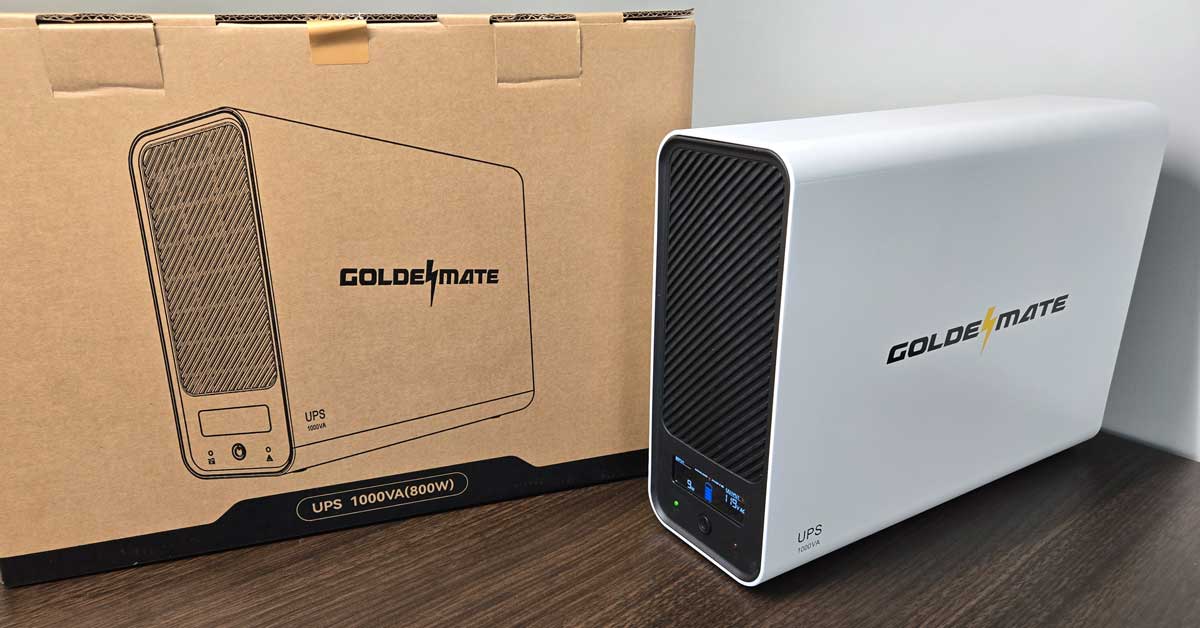An uninterruptible power supply is a great way to keep your devices powered-on and protected from sudden power outages or surges. Personally, I see them as a necessity for anyone serious about working from home.
Recently, I picked up a new UPS for my home office as the APC-branded unit I’ve relied on for 5+ years finally failed on me. After much contemplation, I ended up choosing the GoldenMate 1000VA/800W UPS LiFePO4 Battery Backup and Surge Protector.
It seemed to offer the perfect blend of affordability and power that I needed to keep my workstation up and running. Overall, I must say that I’ve been pretty happy with it.
However, it’s not without its quirks. There’s a few things you should be aware of that I wish I knew before purchasing it. After about 1 month of consistent use, I’m here to share everything I like and don’t like about it. Let’s get right into it.
What I Like
Utilizes LiFePO4 Battery Cells
Any power source that relies on outdated battery technology is one that you’ll want to stay away from. The GoldenMate incorporates the use of LiFePO4 internal battery cells which are far superior than that of standard lithium-ion or lead-acid technology.
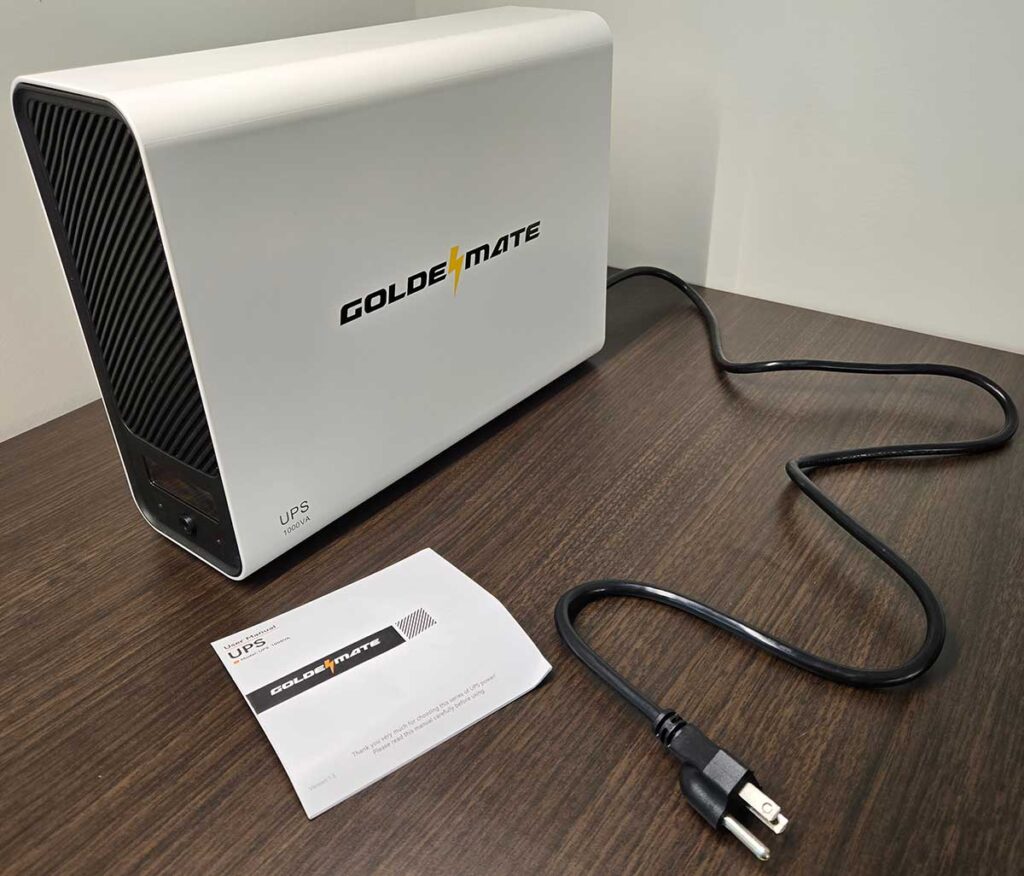
First of all, LiFePO4 is well known to have a 10+ year lifespan with more charge/discharge cycles than any predeceasing technology. Plus, they’re typically much safer and more stable than the battery-type that was used in my outdated APC unit.
Clearly, if you’re looking to invest in a UPS in 2024, you’re going to want to make sure it that it has a LiFePO4 internal battery.
Nice Form Factor and Build Quality
Measuring 13″ long, 9.75″ tall, and 4.2″ wide, the GoldenMate is a nice size and form factor considering the 9 amp-hour (230 watt-hour) internal LiFePO4 battery that it carries. It fits perfectly on the floor next to my desk and definitely isn’t an eyesore; it looks pretty nice!
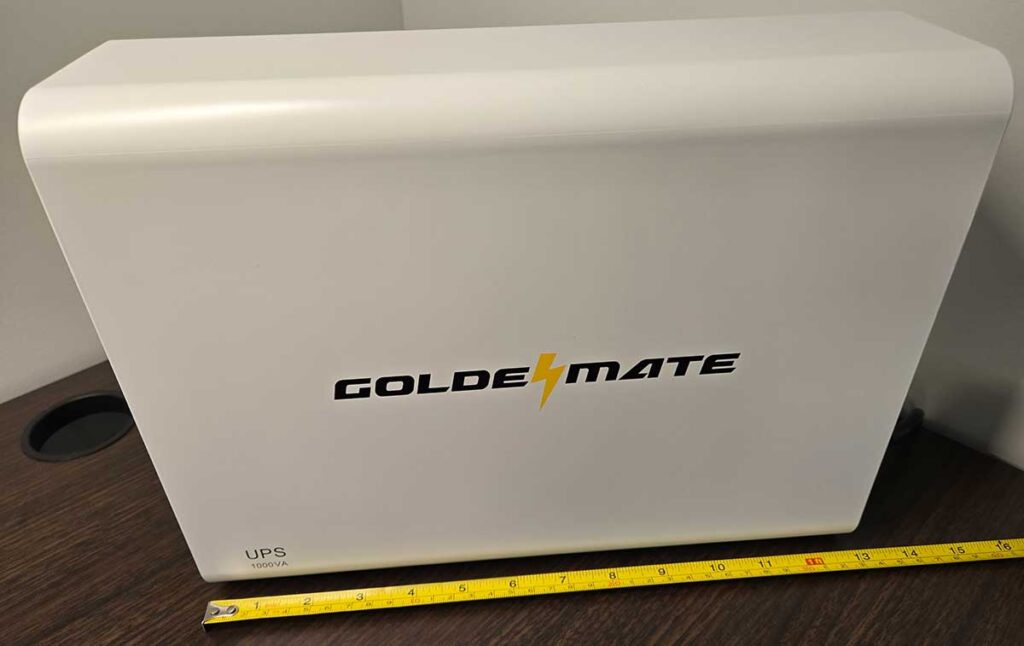
On the front, there’s a small LCD that shows precise input/output draw as well as remaining battery capacity with an easy to read icon. On the backside, there are four grounded outlets as well as the AC input socket, a communication port, and an overload protector switch.
Best of all, the four AC outlets are tilted at an angle, so large power supplies can be nestled without getting in the way of each other. It’s a pretty smart detail that I’m glad GoldenMate thought of and implemented.
Runs Cool
I tested the GoldenMate UPS for about 4 weeks so far, and in that time, I never encountered any overheating issues. Sure, it gets a little bit warm when under a high load for several hours, but it isn’t concerning by any means.

Externally, there’s ample ventilation on both the front and the back sides. Internally, there’s a cooling fan that automatically turns on if needed. I must admit that it does get a bit loud, but it does a great job at keeping the unit relatively cool.
The fan works in conjunction with the front and back heat emission holes to move fresh air internally and exhaust warm air that would otherwise be built-up inside.
Ample Protection
The GoldenMate UPS includes a BMS (battery management system) that ensures proper voltage is regulated in the correct manner. When you plug it in to charge or when you plug-in a device to power, the BMS makes sure that energy is being distributed in a way that will not damage the internal LiFePO4 battery or whatever you have plugged into it.
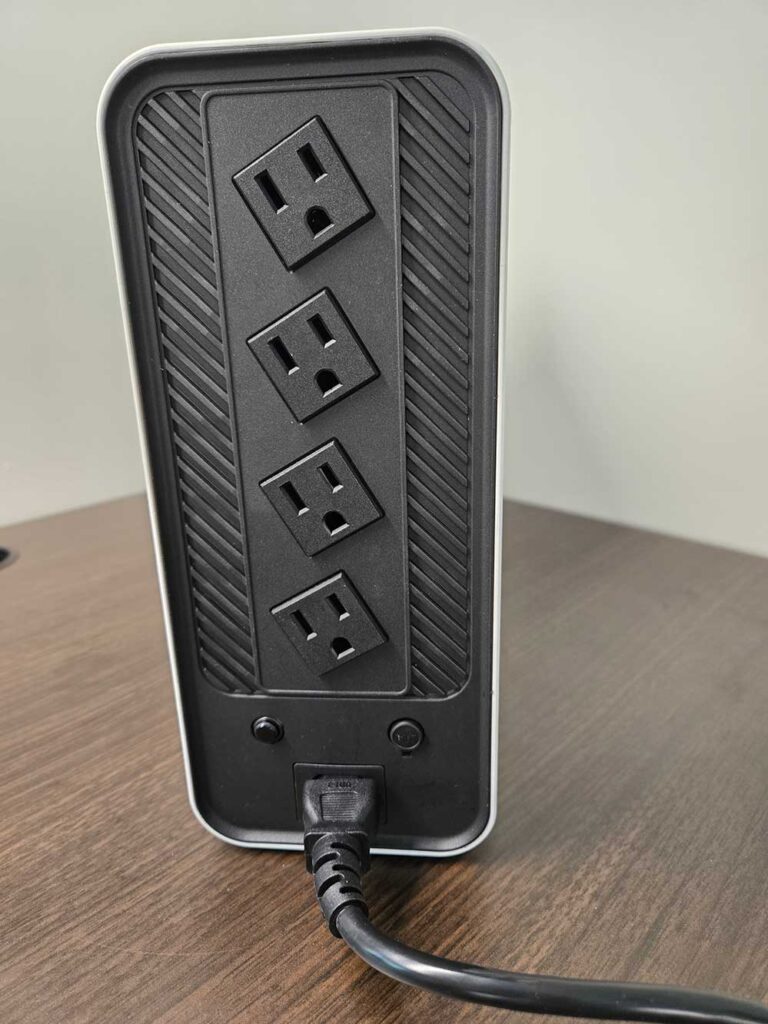
In addition to provided reliable power, the GoldenMate UPS provides surge protection so that all of your devices or appliances are properly protected when the power goes out. And with a 20 millisecond response time, you may not even realize that the unit automatically switches over since it keeps everything plugged-in powered and ready to use.
What I Didn’t Like
Beeping Noise
The major downside I must point out is the beeping noise. Whenever the power is out or the UPS is not receiving power from the wall, it will beep every 5 seconds. And worst of all, there’s no way to turn this beeping noise off. Needless to say, this can be quite annoying and frustrating.
However, there is a workaround to disable this beeping noise. By removing the two rubber pads on the bottom-side of the unit, you can access 4 screws. Unscrew them and slide-off the exterior shell. Once open, look for the small speaker on the motherboard. It’s the little round object with clear whitish rubber on it. Puncture a hole in this speaker and it will no longer beep.
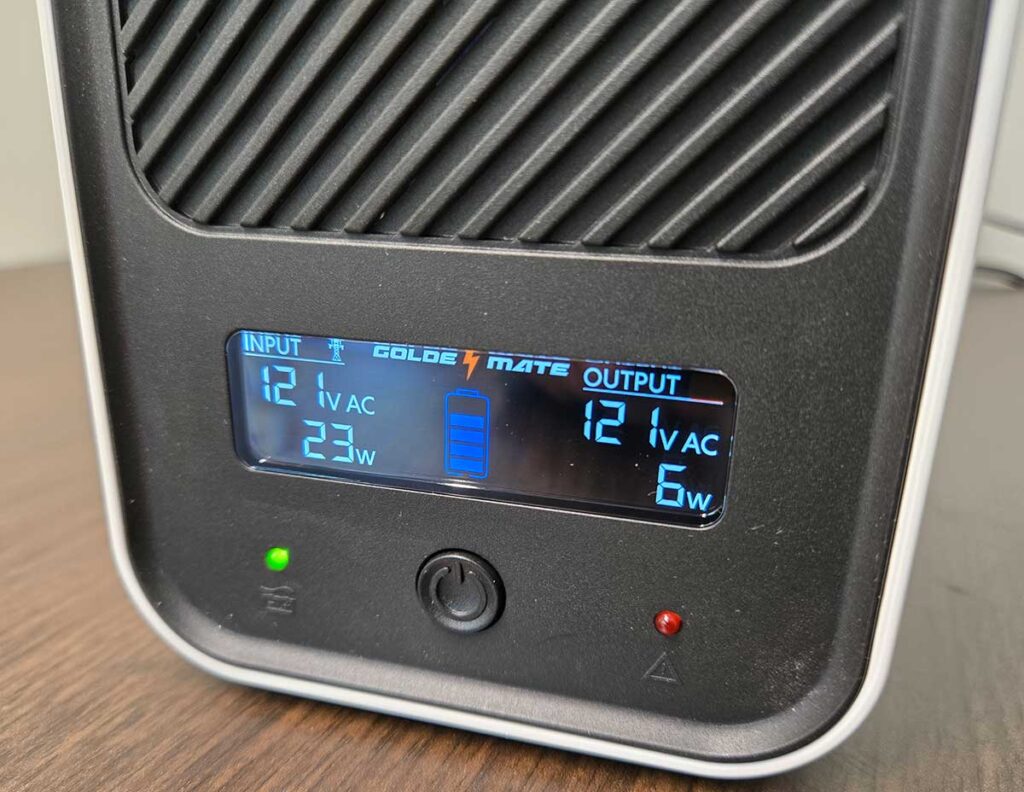
Yes, this is risky and may void your warranty, but it’s the only possible way to disable the annoying beeping noise. Just be very careful, as you could get a nasty shock if you poke and prod at the wrong thing inside. And obviously, you won’t be able to clearly distinguish certain indicator warnings if you fully disable the speaker as the speaker also notifies you of other faults that may occur.
Fan Noise
Although I briefly mentioned it earlier, the internal fan noise is something that you should be aware of. While it’s not constantly running, it does create a bit of a loud noise when it’s activated. It would have been nice if GoldenMate installed a quieter fan. However, it’s definitely sufficient at keeping the internals cool; and that’s what matters the most.
Final Thoughts
As you can tell, I truly do love the GoldenMate UPS. Despite the major quirk of the beeping noise and relatively loud internal fan, it has a lot of good going for it. The internal LiFePO4 cells are something you don’t find in every UPS, and that’s what truly puts it above the competition.
Considering the budget-friendly price-point, I would say that the GoldenMate UPS is definitely a good investment. Just be aware of the good and bad, and make an informed decision based on that. Let me know if you have any questions by dropping a comment below.
Meet Ry, “TechGuru,” a 36-year-old technology enthusiast with a deep passion for tech innovations. With extensive experience, he specializes in gaming hardware and software, and has expertise in gadgets, custom PCs, and audio.
Besides writing about tech and reviewing new products, he enjoys traveling, hiking, and photography. Committed to keeping up with the latest industry trends, he aims to guide readers in making informed tech decisions.

